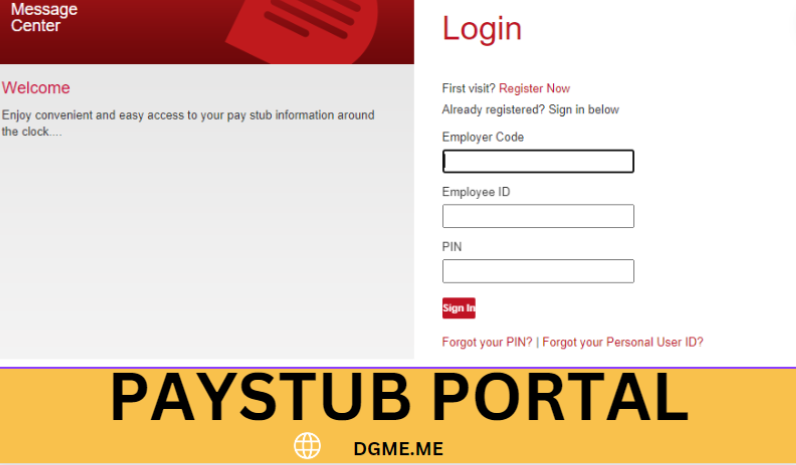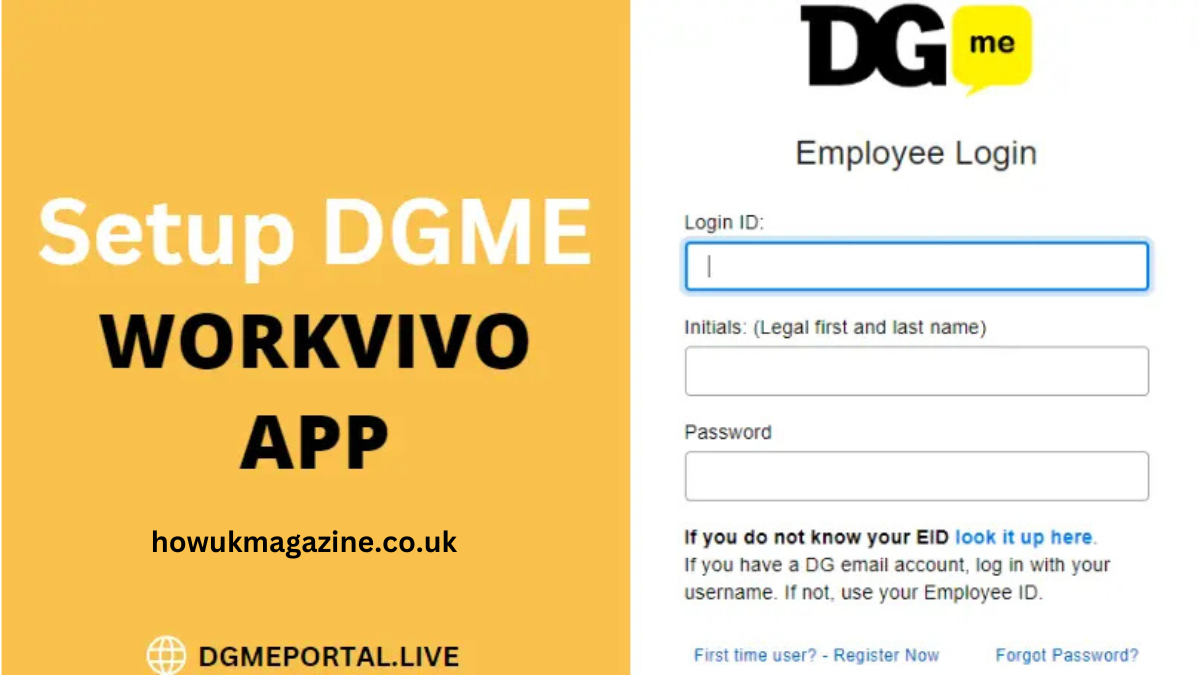In today’s fast-paced digital world, platforms that provide access to services or essential tools often come with a robust sign-in process. dgme elevate sign in, a popular platform used by a variety of organizations, is no different. Whether you’re an employee, administrator, or part of a training program, logging into DGME Elevate is an essential task for accessing critical resources.
However, for some users, signing in to dgme elevate sign in can be a confusing or frustrating experience if they don’t have the right guidance. In this comprehensive article, we’ll break down everything you need to know about the dgme elevate sign in process. From troubleshooting common login issues to understanding the platform’s functionality, we’ve got you covered.
What Is dgme elevate sign in?

Before we dive into the specifics of signing in, let’s first understand what dgme elevate sign in actually is. DGME Elevate is a sophisticated learning management system (LMS) used primarily by employees within large organizations for training, development, and communication. It provides access to online courses, training modules, professional development opportunities, and much more.
It’s designed to help users engage with company resources, improve skills, and track personal and professional growth. dgme elevate sign in also offers various administrative tools for supervisors, managers, and HR teams to manage users, monitor progress, and ensure that the right employees are completing the necessary training.
Why Is Signing In Important?
Logging in to dgme elevate sign in is your gateway to a wealth of resources and services, making it a critical step. Without signing in, you won’t be able to access personalized information, track your progress in learning modules, or take advantage of any of the platform’s professional development tools. Signing in is necessary to gain access to:
Personalized Learning Plans: Your learning and training materials are tailored specifically to your role, skill level, and career path. Signing in ensures you can access these resources and stay on top of your personal development goals.
Course Tracking: Once logged in, you can track your progress through various courses or modules. Whether you’re working towards a certification or just learning new skills, this feature helps you monitor how much you’ve completed and what’s left to do.
Collaboration with Peers: Many organizations use dgme elevate sign in to facilitate collaboration among team members. By signing in, you can interact with your colleagues, ask questions, or share insights on courses or modules.
Access to Reports and Analytics: Supervisors, HR professionals, and training administrators often use dgme elevate sign in to monitor the performance of employees. Signing in allows them to generate reports, track completion rates, and measure training effectiveness.
So, as you can see, the sign-in process is far more than just a formality—it’s the entry point to everything that dgme elevate sign in has to offer.
dgme elevate sign in Step-by-Step Process
Now that you understand the importance of logging into dgme elevate sign in, let’s walk through the step-by-step process to help you sign in correctly. The login process is relatively simple, but we’ll break it down for clarity.
Go to the Official dgme elevate sign in Login Page
To start, you’ll need to visit the official dgme elevate sign in page. This can usually be accessed through your company’s internal website or directly from the DGME Elevate portal. If you’re unsure where to find the sign-in link, reach out to your organization’s IT or HR department for assistance.
Tip: Always make sure you’re on the official login page to avoid phishing scams. Check for “https://” in the URL and ensure the site’s design matches the one provided by your organization.
Enter Your Login Credentials
Once you’ve navigated to the login page, you’ll need to enter your credentials. Typically, dgme elevate sign in requires a username and password. The username is usually assigned by your organization, and it’s often your employee ID or email address.
Password Management: If you’re new to the platform or have forgotten your password, most login pages provide an option to reset it. Be sure to choose a strong password that’s not easy to guess, and always keep it secure.
Multi-Factor Authentication (MFA)
Depending on your organization’s security settings, you may be prompted to complete multi-factor authentication (MFA). This adds an extra layer of security to ensure that only authorized users can access the platform.
The MFA process may involve receiving a code via email, SMS, or using an authentication app like Google Authenticator or Microsoft Authenticator. Follow the on-screen prompts to complete this process, and you should be granted access.
Access Your Dashboard
Once you’ve successfully signed in, you’ll be taken to your dgme elevate sign in dashboard. From here, you can navigate to various sections, including your training modules, performance reports, and more. This is your home base within the platform.
Common Sign-In Issues and How to Fix Them
While the dgme elevate sign in process is usually smooth, sometimes issues can arise. In this section, we’ll cover some of the most common problems users encounter during the login process and provide solutions to help you troubleshoot.
Forgotten Username or Password
One of the most frequent problems users face is forgetting their login credentials. If you can’t remember your username or password, don’t worry—you have a few options.
Forgot Username: If you’ve forgotten your username, it’s often linked to your email address or employee ID. If you’re unable to locate it, you can typically retrieve it by clicking the “Forgot Username” link on the login page. This will prompt you to enter your email address or other identifying information so the system can send you your username.
Forgot Password: Similarly, if you can’t remember your password, there’s usually a “Forgot Password” link available. Follow the instructions to reset your password, which will often involve answering security questions or receiving an email with a reset link.
Account Locked Due to Multiple Failed Login Attempts
If you enter your username or password incorrectly too many times, your account may be temporarily locked for security reasons. If this happens, you will typically need to wait for some time (e.g., 15 minutes) before trying again. Alternatively, you can reach out to your IT department or dgme elevate sign in support for assistance in unlocking your account.
Multi-Factor Authentication Issues
Some users face problems during the MFA process, especially if they don’t receive the authentication code. If this happens, you should first ensure that your phone or email is connected properly and that you have access to the authentication method you selected. If problems persist, contact your administrator to troubleshoot the issue.
Browser Compatibility Issues
dgme elevate sign in is designed to work on most modern browsers like Google Chrome, Mozilla Firefox, and Microsoft Edge. If you encounter issues signing in, try clearing your browser’s cache or using a different browser. Sometimes outdated browser versions can cause login problems.
Tips for a Smooth dgme elevate sign in Experience
To help ensure your login experience is as smooth as possible, here are a few practical tips:
Keep Your Credentials Secure
Your login credentials are the gateway to all of your personal information, so it’s essential to keep them safe. Never share your username or password with others, and always log out of the platform when you’re done using it, especially on shared or public computers.
Enable Multi-Factor Authentication (MFA)
If your organization offers MFA, take advantage of it. Enabling this additional layer of security can help protect your account from unauthorized access, especially in today’s world where cybersecurity threats are prevalent.
Regularly Update Your Password
Changing your password regularly is a good security practice. If you ever suspect that your account has been compromised, update your password immediately.
Use Strong Passwords
A strong password is difficult to guess. It should contain a combination of uppercase and lowercase letters, numbers, and special characters. Avoid using easily guessable information like your name or birthday.
dgme elevate sign in Features Beyond the Sign-In
Once you’ve successfully logged into dgme elevate sign in, you’ll quickly realize that the platform is more than just a place to access training materials. Here are some additional features you can take advantage of:
Personalized Learning Paths
dgme elevate sign in offers personalized learning paths based on your role, career goals, and skill level. Once you’re logged in, you can track the courses you’ve completed, see upcoming modules, and receive recommendations for courses that align with your growth goals.
Collaborative Features
You can collaborate with other users within the platform, discussing training materials, sharing insights, or participating in group activities. This can be especially useful for larger teams or organizations that are working on training initiatives together.
Progress Tracking
The platform offers detailed analytics on your progress through training modules, giving you insight into how well you’re doing. Managers and HR teams can also track employee progress, ensuring that everyone is staying on track with their training goals.
